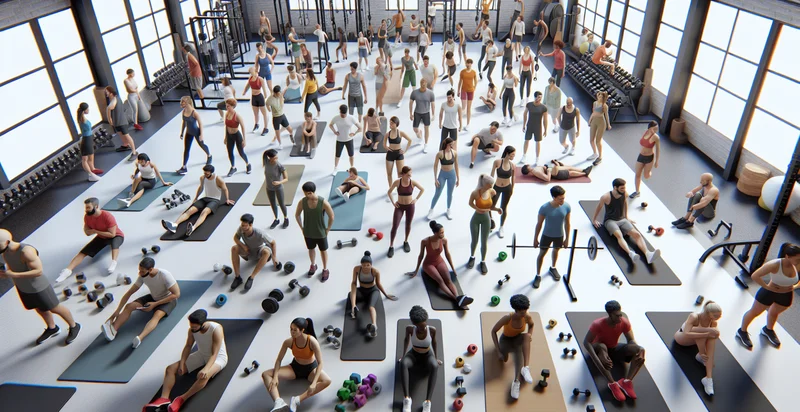Identify count of people in a gym
using AI
Below is a free classifier to identify count of people in a gym. Just upload your image, and our AI will predict the number of people in the gym - in just seconds.

Contact us for API access
Or, use Nyckel to build highly-accurate custom classifiers in just minutes. No PhD required.
Get started
import nyckel
credentials = nyckel.Credentials("YOUR_CLIENT_ID", "YOUR_CLIENT_SECRET")
nyckel.invoke("count-of-people-in-a-gym", "your_image_url", credentials)
fetch('https://www.nyckel.com/v1/functions/count-of-people-in-a-gym/invoke', {
method: 'POST',
headers: {
'Authorization': 'Bearer ' + 'YOUR_BEARER_TOKEN',
'Content-Type': 'application/json',
},
body: JSON.stringify(
{"data": "your_image_url"}
)
})
.then(response => response.json())
.then(data => console.log(data));
curl -X POST \
-H "Content-Type: application/json" \
-H "Authorization: Bearer YOUR_BEARER_TOKEN" \
-d '{"data": "your_image_url"}' \
https://www.nyckel.com/v1/functions/count-of-people-in-a-gym/invoke
How this classifier works
To start, upload your image. Our AI tool will then predict the number of people in the gym.
This pretrained image model uses a Nyckel-created dataset and has 17 labels, including 0, 1, 10-15, 16-20, 2, 21-25, 26-30, 3, 31-40 and 4.
We'll also show a confidence score (the higher the number, the more confident the AI model is around the number of people in the gym).
Whether you're just curious or building count of people in a gym detection into your application, we hope our classifier proves helpful.
Related Classifiers
Need to identify count of people in a gym at scale?
Get API or Zapier access to this classifier for free. It's perfect for:
- Gym Traffic Analysis: This use case focuses on analyzing the traffic patterns within a gym. By classifying the number of people in different areas at various times, gym management can optimize schedules and staff allocation, ensuring that popular areas are adequately monitored during peak hours.
- Membership Utilization Tracking: Gym owners can leverage the function to track how often members utilize the facility. By identifying peak usage times and comparing them to membership sales, they can tailor marketing strategies to improve retention and encourage visits during off-peak hours.
- Safety Compliance Monitoring: With a focus on health and safety, this use case would ensure that the gym doesn't exceed maximum capacity based on safety regulations. By continuously monitoring the number of occupants, the gym can prevent overcrowding and maintain a safer environment for its members.
- Personalized Member Experience: Incorporating this classification feature could help in creating personalized experiences for gym-goers. By understanding when and where members frequently visit, the gym can send tailored notifications or promotions for classes or equipment based on the most popular times for individual members.
- Marketing Campaign Effectiveness: By analyzing attendance data, gym management can evaluate the impact of marketing campaigns. If certain promotions lead to increased occupancy during specific hours, they can refine future campaigns to target those times and demographics more effectively.
- Operational Efficiency Improvement: This function can assist in identifying which gym equipment or areas are underutilized. By tracking usage patterns, owners can make data-driven decisions about purchasing additional equipment or adjusting layouts to enhance overall operational efficiency.
- Event Planning and Management: Gyms that host events can use this classification to optimize participation. By assessing how many people typically attend certain types of events, management can improve their planning for resources, staff, and space requirements to ensure a successful experience for all attendees.


